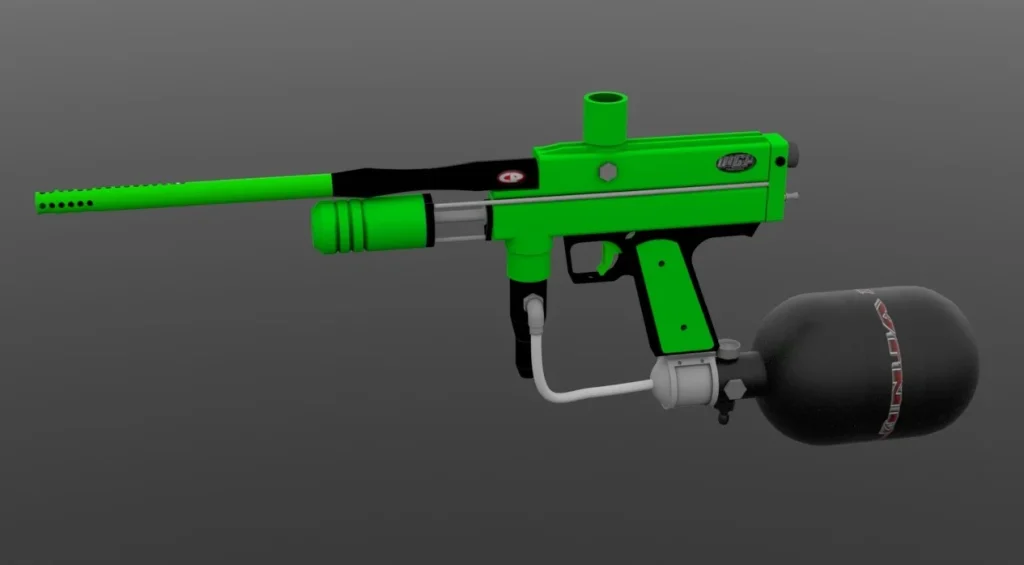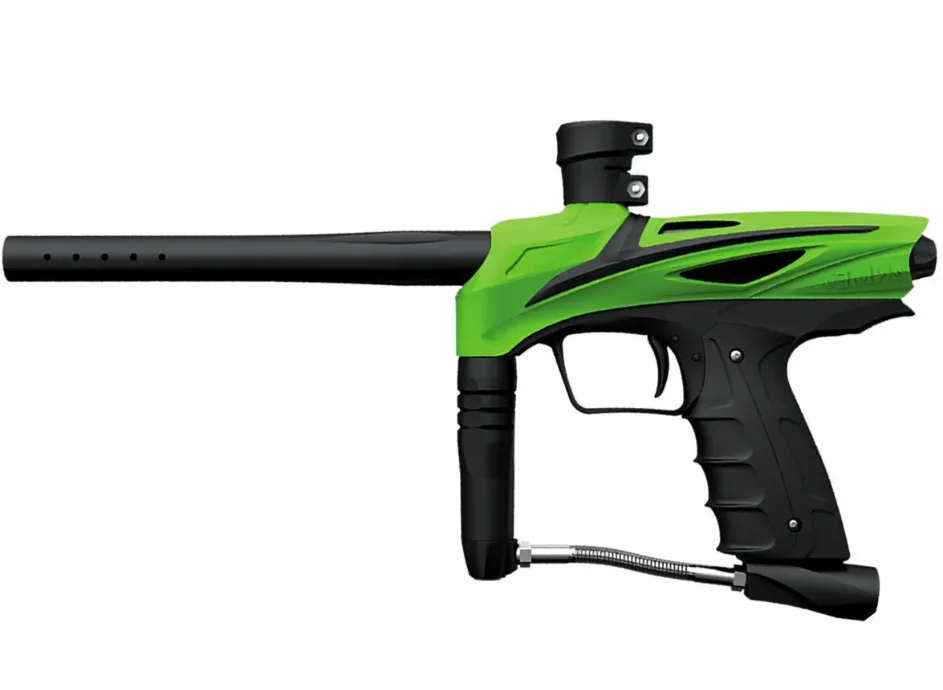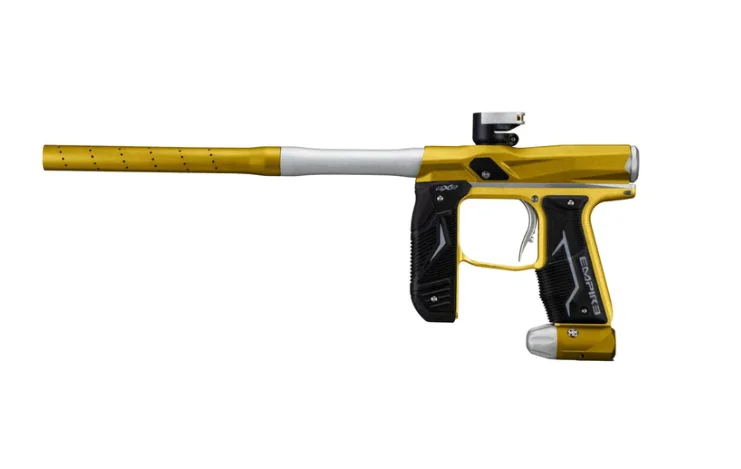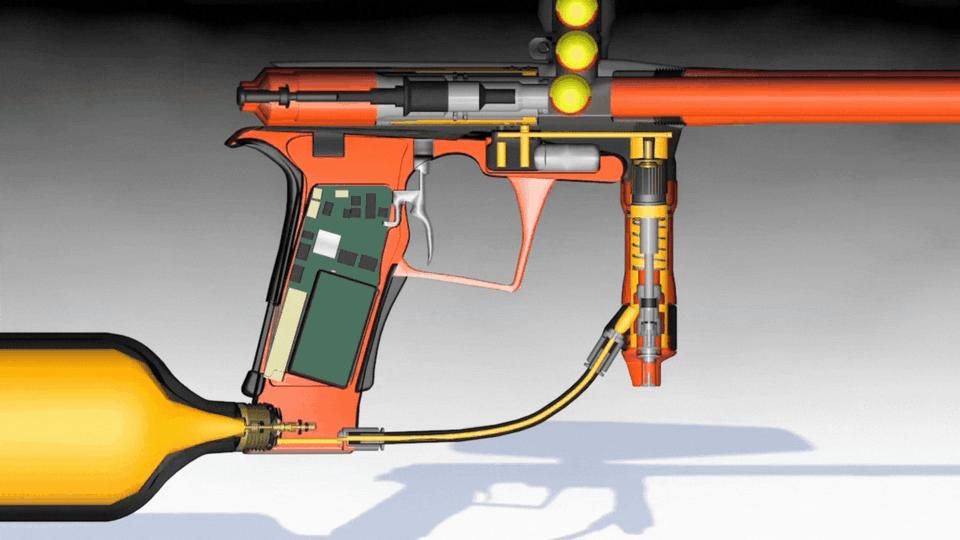How Paintball Guns Work: A Comprehensive Guide
Get Ready to Explore: Dive into the Mechanics of Paintball Guns with Our In-Depth Guide to How They Work!

Introduction:
Paintball guns, also known as paintball markers, are fascinating devices that shoot small paint-filled balls at high speeds. They play a central role in the thrilling combat sport of paintball, where players compete to tag each other with these paintballs and remove opponents from the game.
Understanding how a paintball gun works is more than just a fun fact; it can significantly improve your performance in the game. Knowing the ins and outs of these enables you to fine-tune your shots, making it a breeze to hit your targets precisely.
Types of Paintball Guns:
There are three types of paintball guns, or markers based on their mechanisms and features.
Pump Paintball Guns
It’s the very first paintball gun ever created and remains a trusted option for enthusiasts who enjoy stock-class paintball.
Operating a pump paintball gun is a bit like handling a shotgun – you need to pump it before each shot. While not as popular as the newer mechanical or electronic markers, pump markers bring a unique charm to the game. They may be slower, but that only adds to the thrill, requiring more strategy and precision in your shots to win the game.

Mechanical Paintball Guns
The most common paintball guns you will come across are mechanical guns, striking a balance between pump and electronic markers. They are both durable like pump markers and have a faster firing rate like electronic markers.
They can use CO2 or compressed air, making them suitable for various playing conditions. Due to their versatility, they are the ideal choice for most of the paintball players.

Electronic Paintball Guns
The newest type of marker, ideal for speedball, is the electronic paintball gun. Electronic paintball guns have become more affordable, making them accessible to many players. These markers use electronic solenoids and a 9-volt battery for firing.
Unlike mechanical markers, their triggers function like clicking a computer mouse, allowing for rapid fire. A circuit board controls various firing modes like burst, full auto, and ramping.

Basic Components of a Paintball Gun
All paintball guns work on the same principle. A hopper holds the paintballs, a tank of compressed gas provides the propulsion, and the barrel controls the accuracy and speed of your shot. Here are some of the basic components of a paintball gun.
- Main Body
- Grip Frame
- Air Source Adapter
- Ball Detent
- Feed Neck/Hopper Adapter
- Barrel
- Foregrip
- Bolt/Sear/Hammer
- Electronic Marker Bolt

Components Of A Basic Paintball Gun -Image Source- Valken.com
The Firing Mechanism:
The process begins when the player pulls the trigger, setting the gears in motion for an exhilarating paintball adventure. The magic lies within the gun’s design, where a small gas container, usually filled with carbon dioxide or compressed air, is connected to the gun’s air source adapter. When the trigger is squeezed, a valve releases a controlled burst of gas, propelling the paintball forward through the barrel at incredible speed.
The moment the paintball exits the barrel, it embarks on its colorful journey, ready to mark its target with a vibrant splatter of paint. This swift and controlled firing mechanism not only ensures the player’s safety but also adds a thrill to the game as they strategize and aim with precision to hit their opponents.

Gas Sources for Paintball Guns:
There are normally 2 sources of gas for paintball guns.
- Carbon Dioxide (CO2) Tank
- Compressed Air Tank
These gas sources play a crucial role in determining the gun’s performance and firing rate.
Loading the Paintballs:
Loading paintballs into your paintball gun is simple. You just need to follow these 3 easy steps and you are all done.
- Grab your hopper and fill it with paintballs.
- Slide the hopper onto the feed neck of your paintball gun until it clicks into place.
- Give the hopper a gentle shake to ensure a smooth flow of paintballs into the marker.
Velocity Adjustment and Chronograph Testing:
When it comes to precision and accuracy, shooters need to fine-tune their firearm’s velocity to achieve optimal performance. The process involves tweaking the paintball gun’s components to ensure the paintballs fly at the desired speed, resulting in improved shooting consistency.
Furthermore, chronograph testing plays a crucial role in validating the adjustments made. This way, players can ensure their equipment complies with regulations and enjoy a fun, competitive, and safe paintball experience. The rules say that 300 ft/s is the maximum velocity you’re allowed to shoot a paintball gun.
Understanding Accuracy and Range:
Understanding the accuracy and range of paintball guns is essential for any paintball enthusiast. Here accuracy refers to the gun’s ability to hit the target with precision. A reliable paintball gun with good accuracy ensures you won’t miss critical shots during an intense match.
On the other hand, range determines how far your paintballs can travel, giving you an advantage in hitting opponents from a distance. The distance of 30 meters is often quoted as the maximum range of accuracy for recreational users. Mastering these aspects of paintball guns makes you a pro player.
Conclusion:
Although, paintball guns operate through a simple yet ingenious mechanism. However, understanding how paintball guns work adds to the excitement and enjoyment of this popular recreational activity. So grab your gear, head out to the field, and let the colorful chaos begin!
Video Tutorial:
Check out this fantastic video made by ExpertVillage Leaf Group to see how fun is paintball gun works:

